Increasing the movement of people, not cars should be the goal of any public transit initiative.
View this complete post...Archive for the ‘Buses’ Category
Public Transit Concept Video (Los Angeles): NETWORK_LA Transit
Friday, July 1st, 2011New York: Why Privatizing Long Island Bus Could Cost Taxpayers More
Thursday, June 23rd, 2011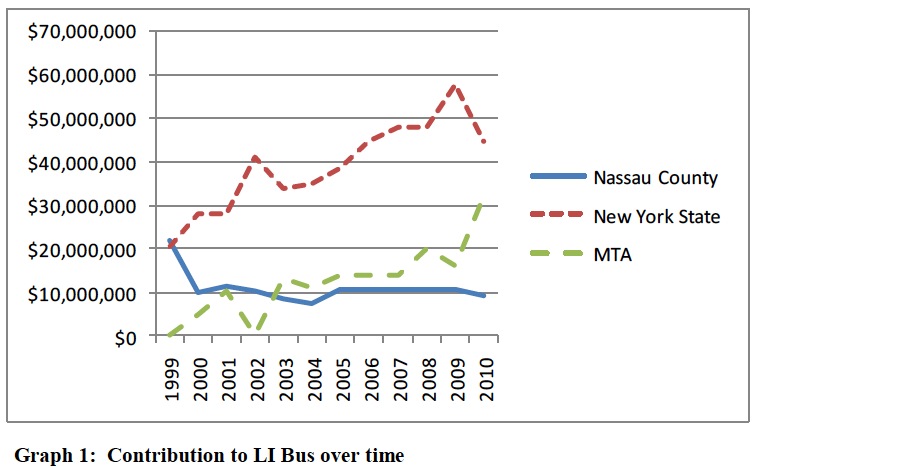
TRI-STATE TRANSPORTATION CAMPAIGN
The failure of Nassau County to fund LI Bus has led to an annulment of the operating agree-ment between the County and the MTA and the County’s pursuit of a private operator to run the bus system. Throughout this process, the County has refused to participate in an open process, rejecting requests for details of the private bidder’s plans to run the bus system. These details would allow a thoughtful analysis of the pro’s and con’s of particular operators and how those operators would compare to the current system operated by MTA. Without this detailed information, the Tri-State Transportation Campaign took it upon itself to research the three known private operators seeking to run Nassau County’s bus system.
Performance Driven: Achieving Wiser Investment in Transportation
Wednesday, June 22nd, 2011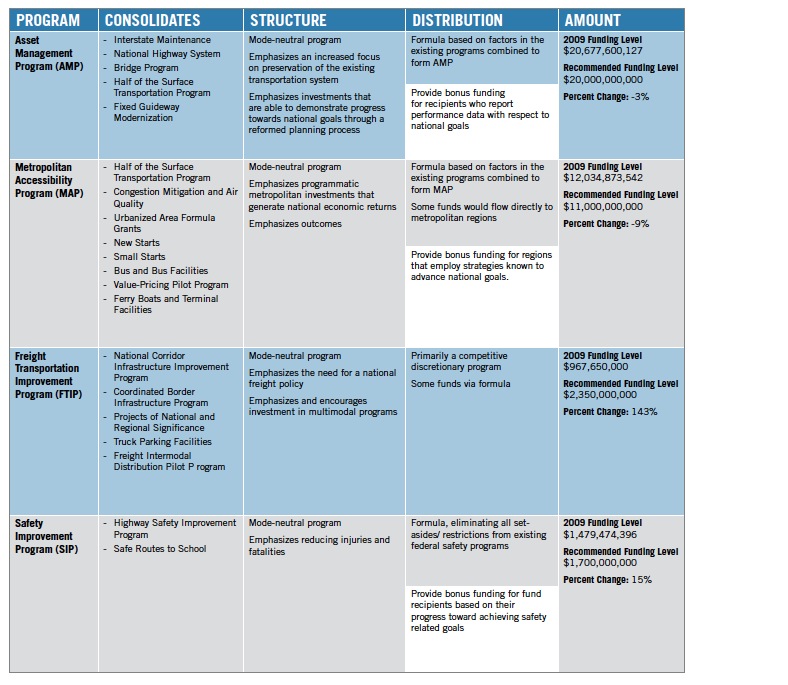
BIPARTISAN POLICY CENTER
In the long term, the programmatic framework proposed in this report allows for the achievement of wiser investments. It offers a sound strategy for securing broad public support for policies and resource commitments that will allow the U.S. to continue to achieve high standards of living and remain competitive in a highly mobile, global economy. It provides a way to make substantial investment and tangible improvement to the vital transportation systems on which our nation depends.
Vision Los Angeles
Friday, June 17th, 2011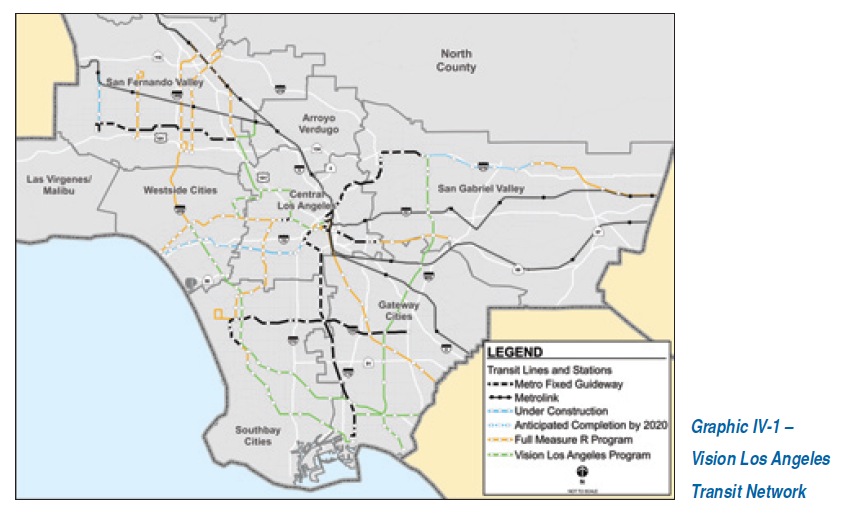
VISION LOS ANGELES
Vision Los Angeles seeks to advance economic and environmental success for Los Angeles County by focusing on transportation mobility. It is led and driven by a partnership between a leading national environmental group, Environmental Defense Fund (EDF), and one of the premier business development organizations in California and the Los Angeles region, the Los Angeles County Economic Development Corporation (LAEDC).
Aging in Place, Stuck without Options: Fixing the Mobility Crisis Threatening the Baby Boom Generation
Tuesday, June 14th, 2011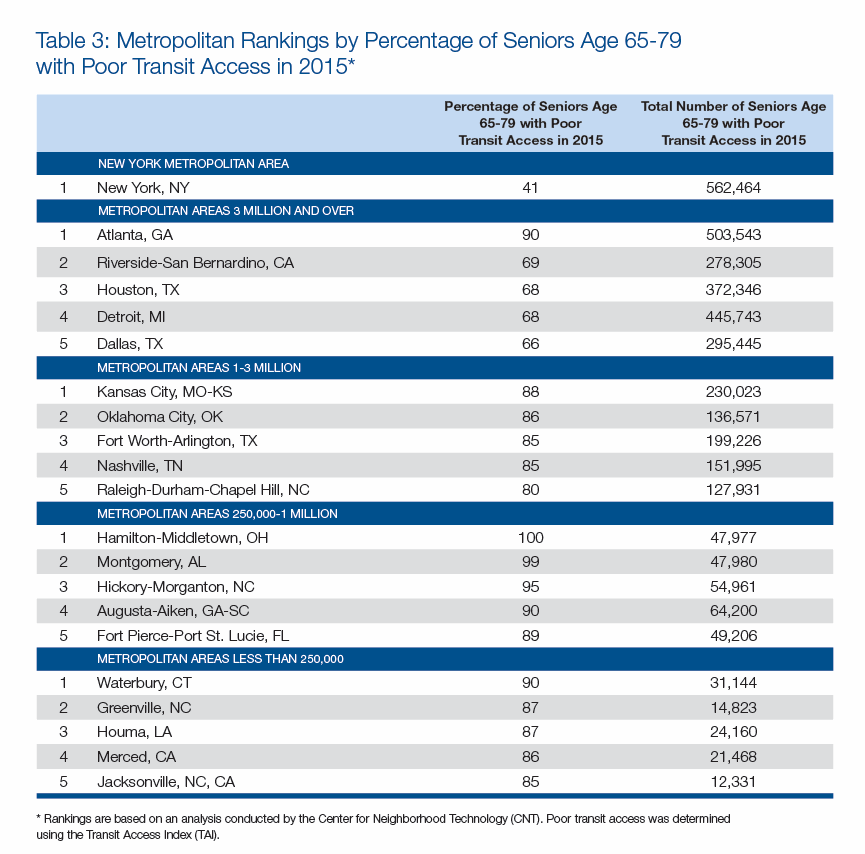
TRANSPORTATION FOR AMERICA
This report ranks metro areas by the percentage of seniors with poor access to public transportation in 2015. Poor transit access is defined for each metro size category to allow for a fair comparison and avoid holding small metro areas to the same standard for transit service and access as large metro areas. For a typical senior, poor access to transit is defined as the average number of bus, rail, or ferry routes within walking distance of their home.
Transportation Statistics Annual Report (TSAR) 2010
Monday, June 6th, 2011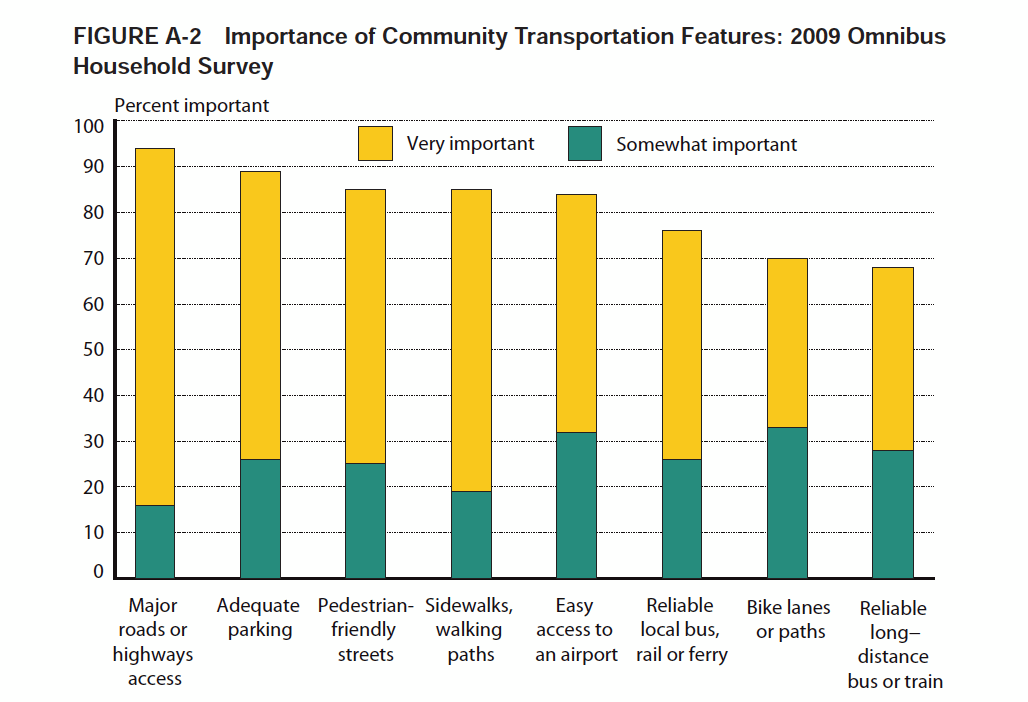
BUREAU OF TRANSPORTATION STATISTICS (BTS)
RESEARCH AND INNOVATIVE TECHNOLOGY ADMINISTRATION (RITA), U.S. DEPARTMENT OF TRANSPORTATION
The Transportation Statistics Annual Report (TSAR) presents data and information compiled by the Bureau of Transportation Statistics (BTS), a component of the U.S. Department of Transportation’s (USDOT’s) Research and Innovative Technology Administration (RITA), to fulfill its legislative mandate. The RITA/BTS mandate covers all modes of transportation and calls for the collection and analysis of transportation data on topics relevant to USDOT’s strategic goals.
The Annual Highlights section focuses on recent USDOT efforts to collect, compile, analyze, and publish transportation data and analysis. Such efforts include the following:
* the Survey of State Funding for Public Transportation,
* Livable Communities and Environmental Sustainability highlights from the Omnibus Household Survey, and
* Commodity Flow Survey (CFS) data and analysis on Hazardous Materials (Hazmat) shipments.
Recapturing Global Leadership in Bus Rapid Transit: A Survey of Select U.S. Cities
Wednesday, June 1st, 2011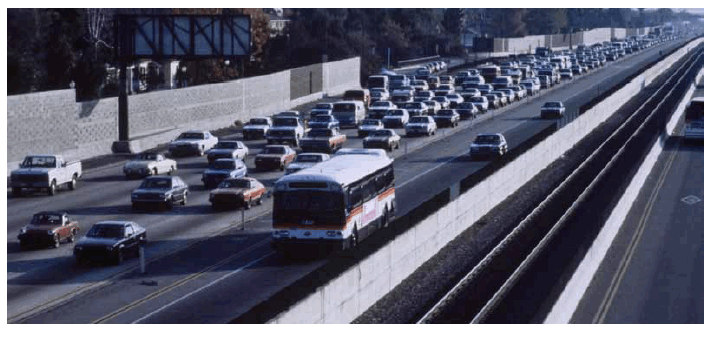
INSTITUTE FOR TRANSPORTATION & DEVELOPMENT POLICY
Bus Rapid Transit was first implemented in Curitiba, Brazil in 1974, and has become a global phenomenon in the twenty-first century. Major new BRT projects have opened since the turn of the century in Africa, Australia, China, India, Indonesia, Iran, Mexico, Turkey, several cities in Europe, and dozens of cities in Latin America…Though it is still in its infancy in the United States, several good BRT systems have opened in the country over the last decade, and perhaps a dozen new projects are in the pipeline in cities from San Francisco to Chicago. In many ways, the spread of BRT in the twenty-first century mimics the worldwide spread of the streetcar a century earlier.
A Glimpse into the Past: Archival Infra Films
Thursday, May 19th, 2011These archival infra films show us how things used to be built, and how systems used to run.
View this complete post...2010 Sustainable Streets Index
Wednesday, May 11th, 2011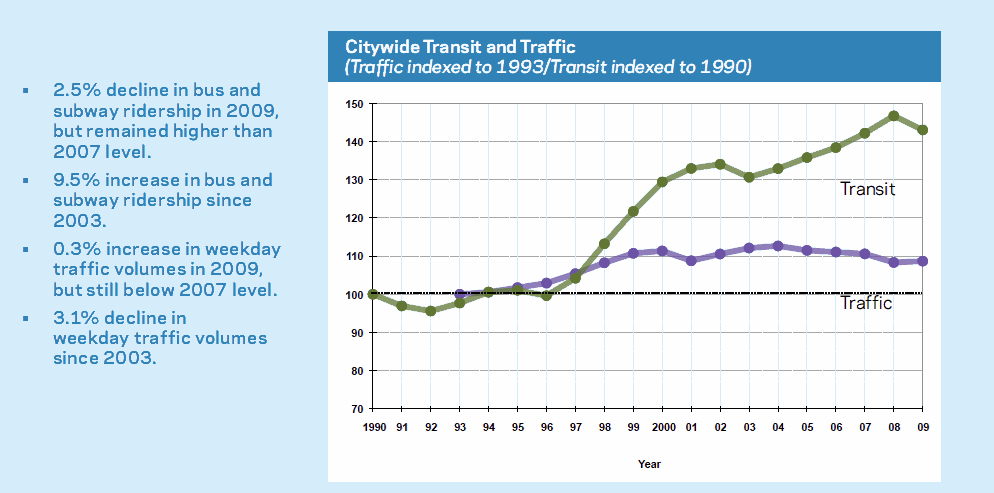
NEW YORK CITY DEPARTMENT OF TRANSPORTATION
Looking beyond the recession, sustainable modes of transportation will likely absorb increased travel generated by economic and population growth – but only if the City and the Metropolitan Transit Authority (MTA) commit the resources to support these modes. The importance of investing in transit and other transportation improvements is illustrated by the two bright spots in the overall picture in the last several years. First, while the bus system as a whole was losing ridership, new Select Bus Services (SBS) in the Bronx and Manhattan attracted increased bus ridership. In a similar vein, continued expansion of the bike network spurred large increases in cycling both into the Manhattan core, and in other areas of the city.
BICYCLING ACCESS AND EGRESS TO TRANSIT: INFORMING THE POSSIBILITIES
Friday, April 29th, 2011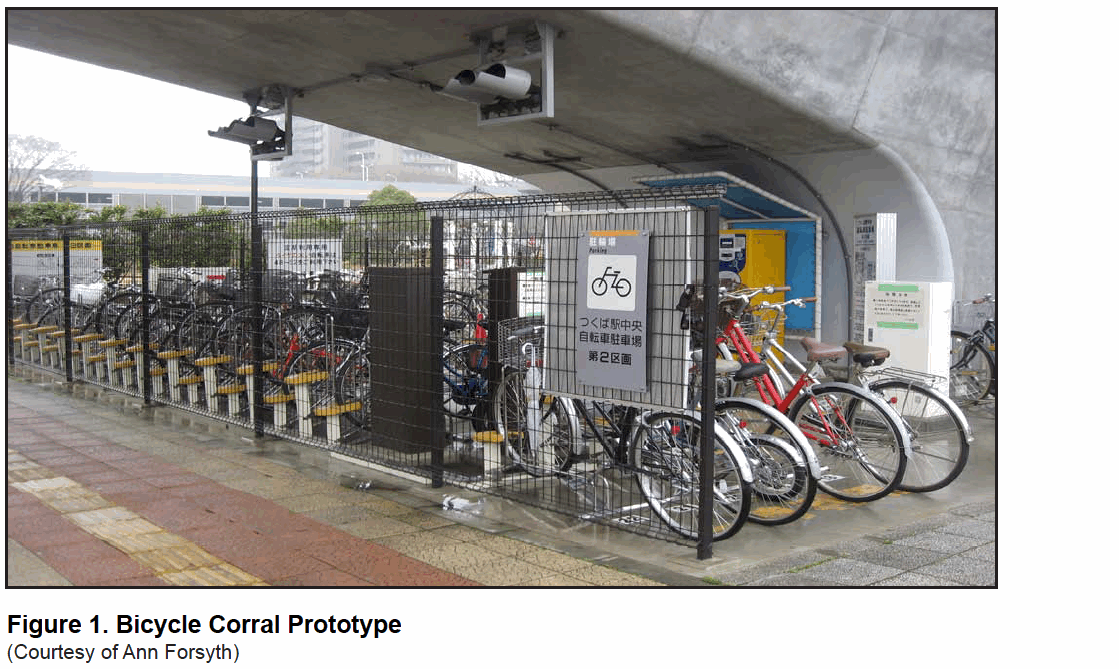
MINETA TRANSPORTATION INSTITUTE
Increasingly, bicycling and transit are receiving attention in planning circles in their own right. Many countries are experiencing rising levels of cycling and available reports of transit ridership suggest that the United States had the highest transit patronage in 52 years in absolute terms in 2008 despite falling gas prices. Several studies suggest that the growth in both modes may in small part be a result of the integration of the two modes.
Follow InfrastructureUSA
CATEGORIES
- Accountability (219)
- Aging Infrastructure (756)
- Aviation (130)
- Biking (323)
- Bipartisan (271)
- Bridges (493)
- Broadband (57)
- Buses (160)
- Carbon Tax (22)
- Clean Air (182)
- Climate Change (200)
- Competitiveness (230)
- Congestion (327)
- Dams (77)
- Democrat (123)
- Drinking Water (191)
- Economic Stimulus (276)
- Employment (207)
- Energy (585)
- Environment (615)
- Equity (239)
- Funding (888)
- Global (205)
- Great American Infrastructure (33)
- Green (294)
- Guests on The Infra Blog (282)
- Hazardous Waste (27)
- High Speed Rail (224)
- Highway (785)
- Inland Waterways (204)
- Jobs (251)
- Land Use (98)
- LEED (28)
- Levees (42)
- Local (1,910)
- National (1,526)
- Policy (1,121)
- Pollution (215)
- Private Investment (213)
- Public Opinion (189)
- Public Parks & Recreation (197)
- Public Transportation (1,028)
- Racism (6)
- Rail (503)
- Recession (65)
- Recovery (218)
- Republican (109)
- Roads (1,120)
- Schools (80)
- Seaports (68)
- Smart Grid (98)
- Smart Growth (442)
- Solid Waste (26)
- Sustainability (765)
- Tax (112)
- Technology (397)
- Telecommunications (46)
- Transit (1,333)
- Urban Planning (981)
- Wastewater (181)
- Water Treatment (166)
Video, stills and tales. Share images of the Infra in your community that demands attention. Post your ideas about national Infra issues. Go ahead. Show Us Your Infra! Upload and instantly share your message.
Is the administration moving fast enough on Infra issues? Are Americans prepared to pay more taxes for repairs? Should job creation be the guiding determination? Vote now!
What do the experts think? This is where the nation's public policy organizations, trade associations and think tanks weigh in with analysis on Infra issues. Tell them what you think. Ask questions. Share a different view.
The Infra Blog offers cutting edge perspective on a broad spectrum of Infra topics. Frequent updates and provocative posts highlight hot button topics -- essential ingredients of a national Infra dialogue.
Dear Friends,
It is encouraging to finally see clear signs of federal action to support a comprehensive US infrastructure investment plan.
Now more than ever, our advocacy is needed to keep stakeholders informed and connected, and to hold politicians to their promises to finally fix our nation’s ailing infrastructure.
We have already engaged nearly 280,000 users, and hoping to add many more as interest continues to grow.
We require your support in order to rise to this occasion, to make the most of this opportunity. Please consider making a tax-deductible donation to InfrastructureUSA.org.
Steve Anderson
Managing Director
SteveAnderson@InfrastructureUSA.org
917-940-7125













 RSS Feed
RSS Feed